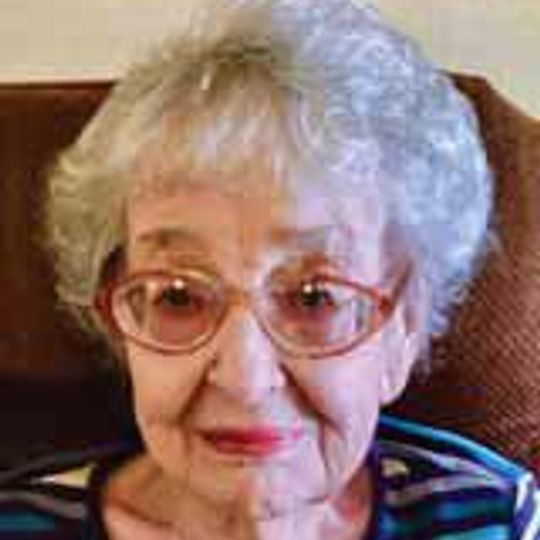ILSE C. LEE

ILSE C. LEE
She was born on June 7, 1926 in Berlin, Germany, to Friedrich (‘Fritz’) and Augusta (Glueck) Winderlich. Her father worked in the social security department, while her mother ran her own seamstress business, sewing dresses for some of the finest shops in Berlin. Ilse’s mother employed several women in her shop, and as a young girl Ilse would love to spend time with the workers, picking up her own lifelong sewing skills. She spent many summers and holidays at her favorite Aunt Gertrude’s house in Genthin, Germany, about a one-hourtrain ride west of Berlin, learning to swim in the canal and climbing apple trees with her sister Ingrid and cousins.
After World War II broke out, Ilse spent summers as part of youth groups sent to work on farms and factories, making mechanical parts for the war. When in Berlin during the height of the war, she and her family would experience nightly bombing raids, frequently needing to take shelter. Her high school (‘Gymnasium’) class was eventually evacuated to former Czechoslovakia. During one such evacuation, her family’s apartment building was bombed. She said she would never forget returning home to Berlin to see the bombed out remains of what used to be their home.
As Germany fell to the Allies, she would flee to Genthin on one of the last trains out of Berlin before the Russian Army arrived. Her parents and sister were already in Genthin, and Ilse would be forever grateful to her best friend’s father, who warned her not to be alone in Berlin during the liberation. Even in Genthin they found themselves threatened when Russian soldiers held a gun to her brother-in-law’s head.
Ilse had always dreamed of living in America as a young girl, and these feelings grew even stronger in post-war Berlin where she lived with her parents and young son, Horst. It was a chance conversation on a public bus, while commuting to her job as a medical technician in the Berlin suburb of Spandau, that put her dream in motion. One morning she asked another commuter who she saw regularly as to why he was so tired. He indicated that his cousin was visiting, who was a German doctor practicing medicine in a hospital in America. She wasted no time, quickly asking him, “do they need a technician?” Sure enough they did, and within months, arrangements were made for Ilse to work in a small town hospital in Veblen, South Dakota. She and Horst packed up their bags, said goodbye to her mother (her father had died in 1957), and emigrated to the US in September 1959, with a 7-day journey to New York City on the Queen Mary. It would be a full 10 years before she returned to Germany for a visit.
Once in the US, it was a hard transition for Ilse to adapt from the hustle and bustle of Berlin to the barren plains, farms, and small towns of the Dakotas. Fortunately, after two years in Veblen, Ilse was set up on a blind date with a local farmer, George Lee, on June 7, 1961 (which was Ilse’s birthday). She was instantly charmed by his “baby blue eyes,” and they were married three months later on George’s birthday (September 21, 1961). In later years, when asked about being set up with Ilse on a blind date, George would quip “we are still blind.”
After their marriage, Ilse and George lived on the Lee family farm north of Veblen, just three miles across the North Dakota state line in Marboe Township, where they raised three more children. Farm life kept Ilse very busy, and she learned to grow a large garden, can vegetables, and deliver meals to workers in the fields at harvest time. She was an excellent cook and taught herself how to make her own special potato salad, apple pie, and wheat bread, which were all family favorites. Ilse enjoyed chess, classical music, and opera, and would listen to music for hours while she kept herself busy sewing, knitting, and crocheting. Her sewing projects included many clothes and quilts, as well as even making snowmobile suits for the entire family for those cold North Dakota winters. As an avid swimmer since childhood, she would regularly swim at Roy Lake, South Dakota, and enjoyed biking around the countryside near the farm. She and George were also active members of Our Savior’s Lutheran Church in Veblen, where Ilse participated in women’s circle groups.
In later years, she and George enjoyed the warmer temperatures and snowbird lifestyle by heading south to Lake Havasu City, Arizona, initially every winter but then residing there year-round from 2003 to 2011. They returned to their North Dakota roots in 2012.
She is survived by her four children: Horst (Sheila) of Lakeville, MN; Christine Harwood (Richard) of Chaska, MN; Robert of Lidgerwood, ND; and Connie of Chicago, IL; four grandchildren: Stephanie Poe, Robert Harwood (Doreen), David Harwood (Olivia), and George Harwood (Casey); and eight great-grandchildren. She is preceded in death by George, her husband of 59 years; her parents, and her sister Ingrid.
The family thanks the caretakers at St. Catherine South in Fargo for the wonderful care of Ilse for nearly 9 years. In lieu of flowers, memorials or donations can be sent to St. Catherine South or Hospice of the Red River Valley, both of Fargo, ND. Cards can be mailed to: Robert Lee, 14536 99th St. SE, Lidgerwood, ND, 58053. A celebration of life service is planned for July 21 at 11:00am at Our Savior’s Lutheran Church in Veblen, SD.
